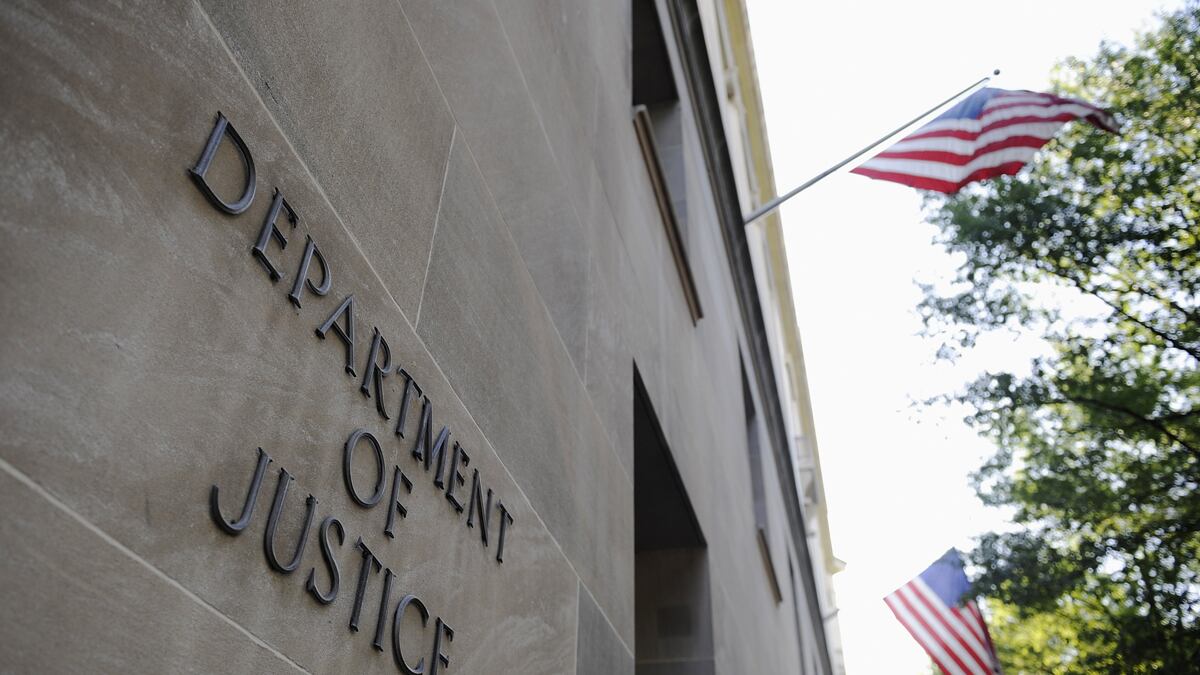Just as the Justice Department announced this week that it is resuming a controversial program that funnels hundreds of millions of dollars in seized assets to police departments around the country, a new report says the practice disproportionately targets low-income and minority communities.
A report by the Center for American Progress, released on Friday, says that “a growing array of studies indicates that low-income individuals and communities of color are hit hardest” by the practice of civil asset forfeiture.
Under these sorts of laws, police can seize citizens’ property—cash, cars and even houses—without ever convicting them of, or in some cases even charging them with, a crime. The laws were created to fight drug trafficking in the ’80s, but civil liberties groups say the perverse incentives just as often lead police to target everyday people.
The Center for American Progress report includes one example of a Philadelphia woman in her mid-60s whose house was seized by police after her niece’s boyfriend was arrested on suspicion of dealing drugs outside the house. She was eventually able to recover her house with the help of pro bono legal assistance, but most people caught in the asset forfeiture system aren’t so lucky.
Since civil asset forfeiture isn’t a criminal proceeding, there is no right to a public defender, and the system is heavily weighted in favor of the government—essentially forcing property owners to prove they are innocent or pay hefty fines to retrieve their possessions. In some states, residents must pay cash bonds before they can even challenge a seizure.
“You have no hope of understanding the process without representation,” Rebecca Vallas, the report’s lead author, said in an interview. “It’s a massive, massive problem basically setting up two-tiered justice based on your income.”
According to the report, low-income communities and communities of color are also hardest hit by civil asset forfeiture because they have less access to banking institutions—which means they often carry more cash on hand, a tempting target for police looking for seizures. For example, the report cites a random survey of cash seizures by Philadelphia police in 2012 and 2013 found that half of the seizures were less than $192.
“We also found civil asset forfeiture can drive struggling families back into poverty,” Vallas said.
I once sat through a daily session of Philadelphia’s rapacious asset forfeiture court and watched dozens similar cases of seized cars and small amounts of cash get processed, nearly all of them against low-income and minority citizens.
And yet, even as the government is taking from poor people with one hand, it is trying to lift them up with the other. The report notes that in 2015, the U.S. Department of Housing and Urban Development awarded Philadelphia a $30 million grant to address “poverty, unemployment, poor educational attainment and decreased opportunities for residents.”
Still, “despite increased federal investment, residents of Philadelphia neighborhoods just like these lose $1 million every year through civil asset forfeiture that deprives them of much-needed cash, homes, and cars—even when they are innocent of any wrongdoing,” the report notes.
And much of that money goes right back into the coffers of the police departments and district attorney’s offices. Under the Justice Department’s Equitable Sharing Program, local police forces, working in tandem with federal law enforcement, keep up to 80 percent of the proceeds from revenue seized under civil asset forfeiture. The other 20 percent is distributed among hundreds of police departments nationwide—$1.7 billion between 2001 and 2014, according to a Washington Post analysis.
Citing budget constraints, the Justice Department suspended payments through the sharing program in December amid critical news investigations and bipartisan efforts in Congress to reform asset forfeiture. However, this week the Justice Department announced it would resume payments through the fund to state and local police departments.
Darpana Sheth, an attorney at the public-interest law firm Institute for Justice—which filed a class action lawsuit to shut down Philadelphia’s asset forfeiture program—said the decision to revive the equitable sharing program “shows that federal, state and local law enforcement are valuing their own funding over protecting constitutionally enshrined rights.”
Police associations railed against the Justice Department’s decision to suspend the program, saying it would cripple their ability to fight dedicated criminals, and they still insist the program delivers vital crime-fighting tools.
“It’s not about the money, it’s about public safety and doing the job,” Terrence Cunningham, president of the International Association of Chiefs of Police, told the Washington Post.
(On Thursday, the Justice Department Inspector General released a report finding that an Illinois police department spent more than $20,000 in equitable sharing funds on accessories for two of its lightly used motorcycles, including after-market exhaust pipes, decorative chrome, and heated handgrips.)
The Center for American Progress report, echoing the recommendations of a bipartisan swath of advocacy groups, calls for requiring convictions before property can be seized, ending cash bonds and petty cash seizures, ensuring access to legal representation, and redirecting asset forfeiture funds into state and local budgets.
Several states have instituted such reforms, and former Attorney General Eric Holder curtailed the equitable sharing fund in 2014. But critics say those changes left in place the joint task forces that allow local police to bypass state laws, and which account for 82 percent of the equitable proceeds and revenue, according to Vallas.
Vallas said returning funds to the legislature for distribution, which is sort of the whole point of a legislature, “makes a heck of a lot more sense than the perverse incentives and system that we’ve watched fail for a decade, basically giving law enforcement a license to eat what you kill.”
Grant Smith, deputy director of national affairs at the Drug Policy Alliance, said in a statement that the decision to restart the equitable sharing program “flies in the face of the Obama Administration’s narrative on criminal justice reform and the need to address racial disparities in how our laws are enforced.”






